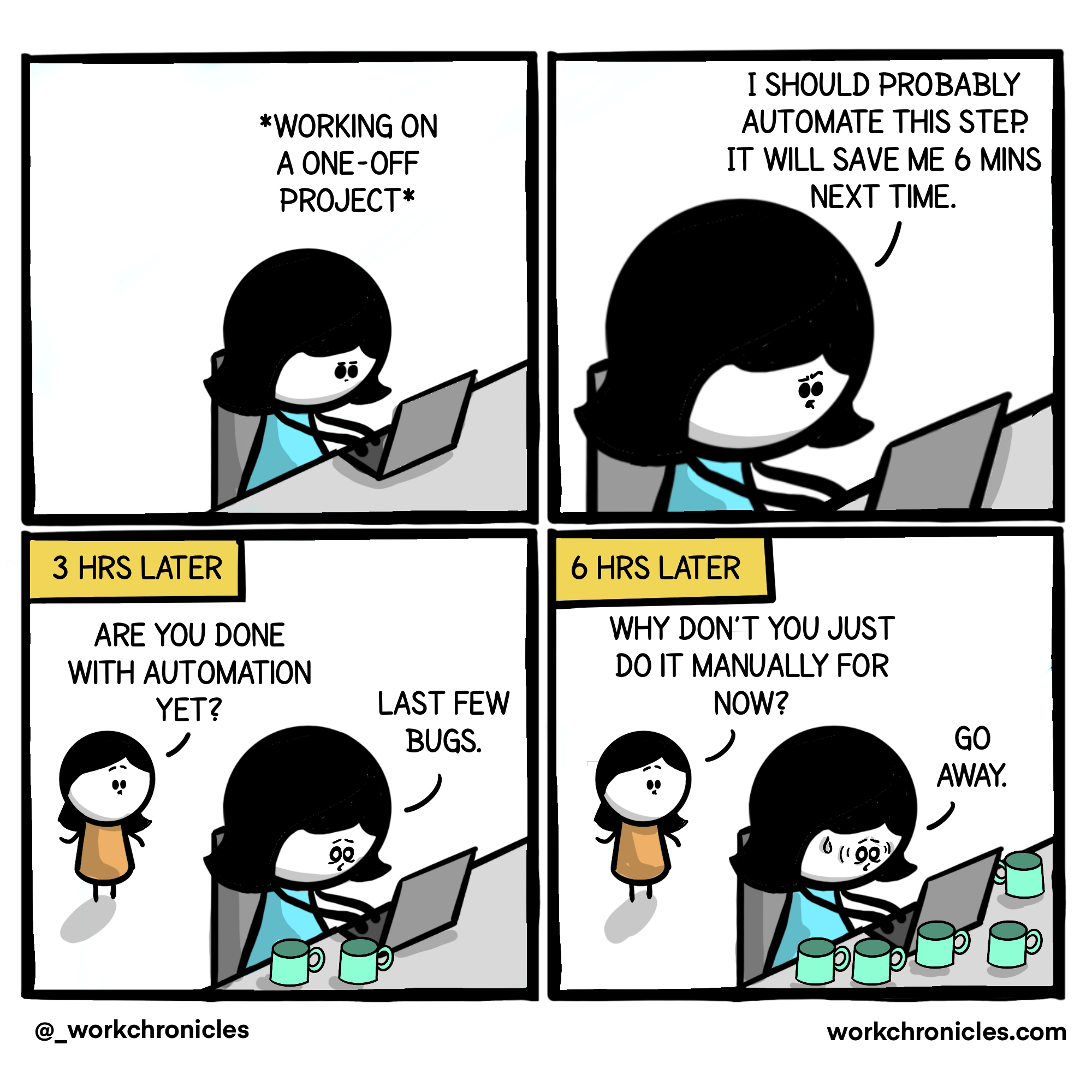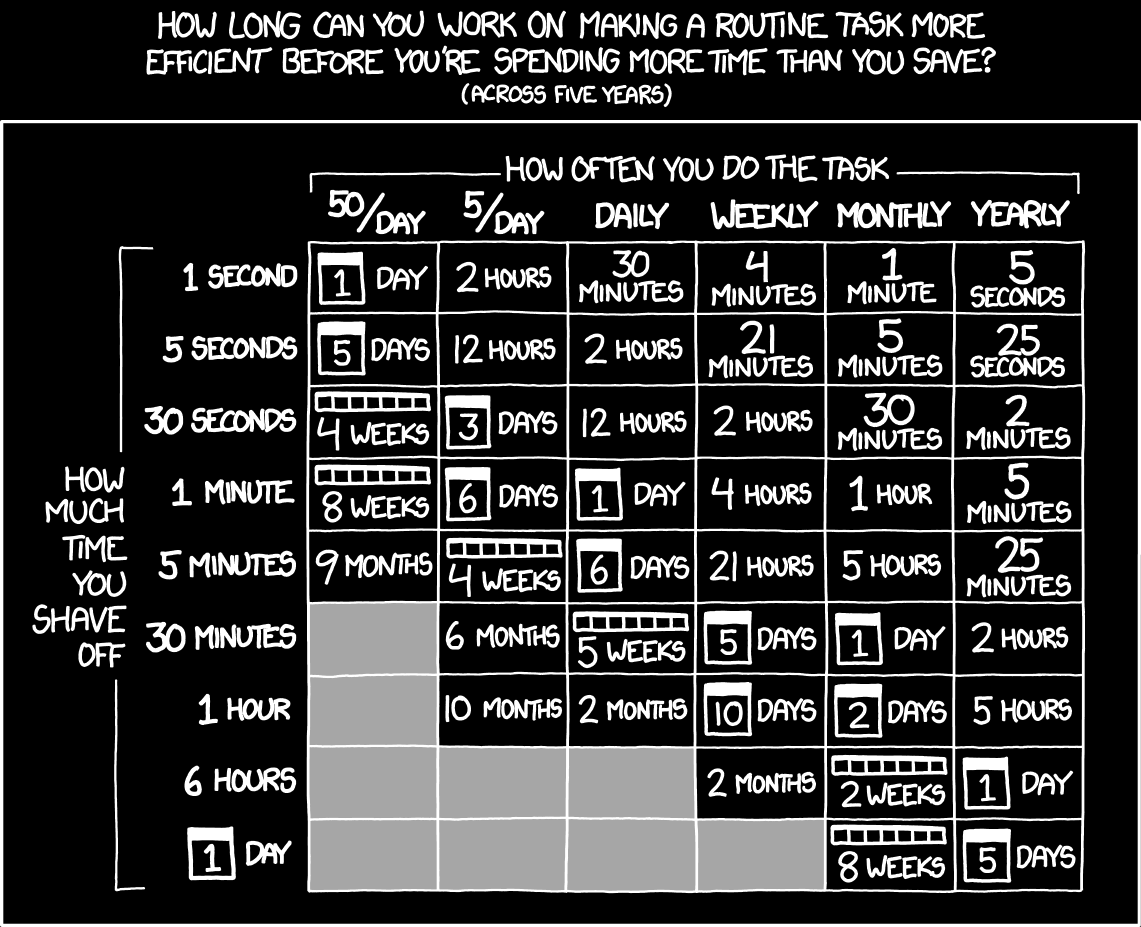Network Automation
Automate your network. Because ain't nobody got time to manually configure every
network device. We've got memes to browse, people!
What is Network Automation?
Have you ever found yourself buried under a mountain of repetitive network configuration tasks, wishing there was a better way? Network automation is like having a helpful robot that takes care of repetitive tasks in your computer network. Instead of doing everything by hand, like setting up connections or fixing problems, this robot does it for you quickly and accurately. With network automation, you can focus on the important stuff while the robot handles the rest, making your network more efficient and reliable.
But why automate your network when, say, configuring a VLAN can be done with just a two-line command?
In today's fast-paced world of networking, where time is money and mistakes can be costly, automation is
like having a superhero on your team. Instead of spending hours typing commands and hoping for the best,
automation swoops in to save the day.
Now you may ask, why write a code that'll take longer to write than
configuring, say a VLAN on a switch manually? Isn't this much faster?

Yes, you're correct! Configuring a VLAN on one switch manually is 100% faster than writing a code to configure it.
However, what if you were to configure a VLAN on 100 switches? Or 1000 switches? Or a million switches?
Network automation offers far-reaching benefits beyond convenience. It transforms network management by ensuring
consistency, reducing human error, and enabling efficient scaling of operations. In essence, while a two-line command
might suffice for a single VLAN, automation empowers organizations to unlock the full
potential of their networks, enabling agility, resilience, and innovation.

So do I automate everything?
Automate when you can, script when you must.
Automate when you can: Utilize available tooling to simplify network automation tasks. Instead
of starting from scratch, prioritize leveraging versatile tools, like Ansible, Puppet, Chef, etc.
The aim is to automate approximately 80% of network tasks.

Script when you must: Resort to scripting when existing automation tools become inadequate or overly complex for
specific operations. Scripting involves creating custom modules or enhancing existing ones within tools.
This doesn't demand extensive programming skills.
Well, does this mean network automation's aim is to replace humans with machines? What about my job?
Automating your network isn't about replacing people with machines; it's about
empowering you and your team to tackle more strategic initiatives and drive business growth.
Automation takes care of repetitive and mundane tasks, allowing network engineers like us to
focus on higher-value activities that require human creativity, problem-solving, and critical
thinking skills.

Our role as a network engineer remains crucial in designing, implementing, and maintaining
network infrastructure. While automation streamlines certain aspects of network management,
it doesn't eliminate the need for human oversight and decision-making. In fact, automation
often enhances job opportunities by increasing the efficiency and scalability of network operations.
Moreover, network automation can have a significant impact on both capital expenditure (CapEx) and operational
expenditure (OpEx). By automating routine tasks, organizations can reduce the need for manual labor and the
associated labor costs, leading to OpEx savings.

However, it's essential to consider the broader picture.
While automation may lead to workforce reductions in some areas, it often creates new job opportunities in others.
For example, as organizations implement automation in network management, they may require skilled professionals
to design, implement, and maintain the automated systems. Additionally, automation can free up human resources to
focus on more strategic and complex tasks that require creativity, problem-solving skills, and domain expertise.
Additionally, automation can improve resource utilization and
optimize infrastructure deployment, resulting in lower CapEx expenses over time.
My experience with network automation
During my work experience, much of the network configuration was performed manually, leading to significant
operational overhead. Many network engineers hesitate to automate due to the time and effort required to set
up automation infrastructure. Additionally, many network engineers hesitate to automate due to either a lack
of expertise in automation techniques or the perceived effort required to shift from manual to automated processes.
However, my perspective shifted during my master's degree when I explored network automation.

I realized its potential for streamlining tasks and boosting efficiency. For example, I developed a script to
automate BGP, OSPF, and DHCP configuration on multiple routers, simplifying the process and saving time.
Additionally, I created modular components for tasks like router connectivity and SSH access, enhancing the
functionality of my automation scripts. These experiences demonstrated the power of network automation in
optimizing operational workflows.
Okay, I'm convinced. But how do I automate my network now?
You've come to the right place! In the upcoming articles, I will write about what to automate and how to setup a basic infrastructure. I'll be using GNS3 and Python to automate the infrastructure. It's quick and easy to follow. Trust me, with this, you won't ever have to touch the CLI (or maybe a little). Stay tuned and happy automating!
View Project on GitHub